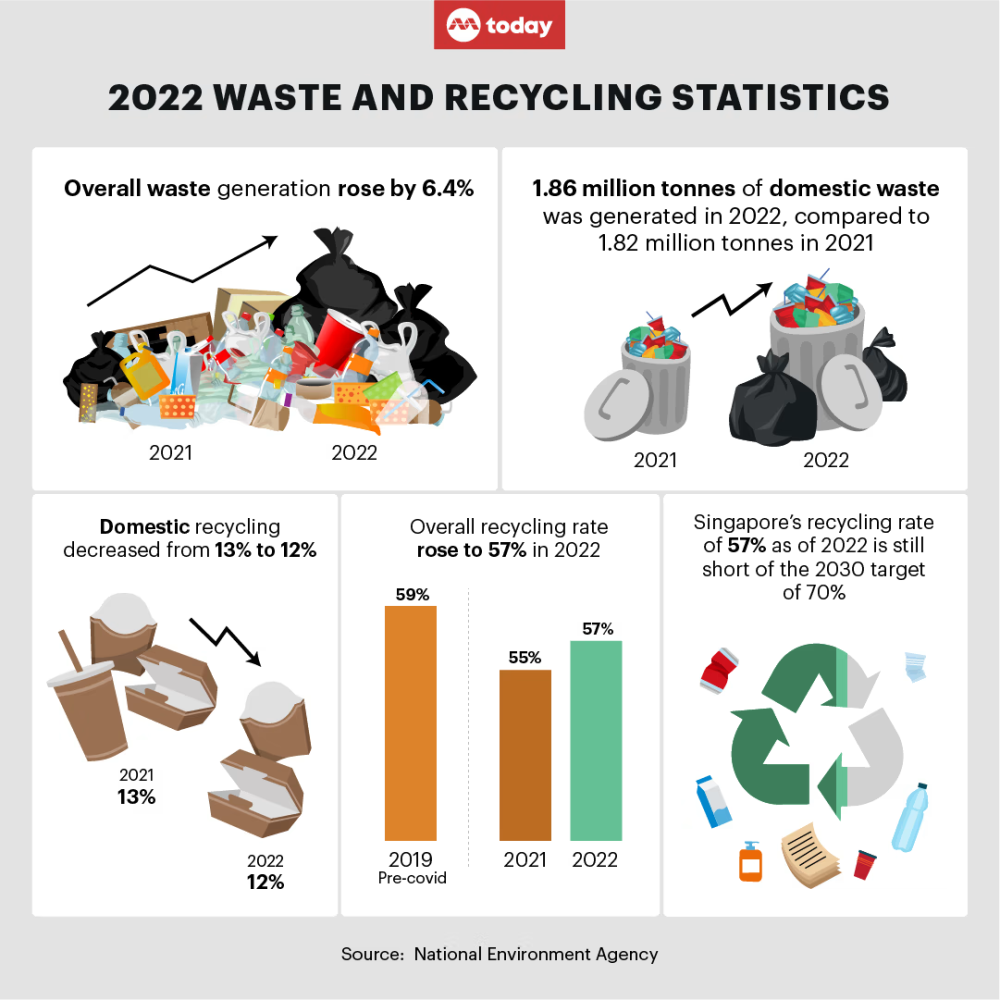SINGAPORE, May 4 — Singapore generated more domestic waste last year than in 2021, and its domestic rate of recycling fell slightly to the lowest level in over a decade as higher freight costs meant less waste than usual was exported for recycling.
Domestic waste refers to waste from households and premises such as schools, shop houses, hawker centres and places of worship.
In 2022, as economic activity picked up, 1.86 million tonnes of domestic waste was generated, compared to 1.82 million tonnes the year before, the National Environment Agency (NEA) said on Wednesday.
The fall in the domestic recycling rate from 13 per cent to 12 per cent was largely due to a drop in paper, cardboard, textile and leather waste recycled, it reported in its 2022 Waste and Recycling Statistics.
Currently, all of Singapore’s paper and textile recyclables are exported for recycling. Lower quantities of these materials were exported for recycling last year, as freight costs rose compared to pre-Covid-19 levels.
Slight rise in overall rate of recycling
More waste was generated last year as economic activity, including construction and demolition works, picked up. A total of 7.39 million tonnes of solid waste was generated in 2022, up 6.4 per cent from the year before.
Two major types of industrial waste — construction and demolition waste, and ferrous metals — were the main contributors to the increase in overall waste generation.
Still, in spite of the fall in Singapore’s domestic rate of recycling, the nation’s overall rate of recycling rose from 55 per cent in 2021 to 57 per cent last year. In 2019 before Covid-19, 59 per cent of waste here was recycled.
The overall rate includes the combined total of what is recycled from both domestic waste and waste from commercial premises such as factories and construction sites.
In 2022, the amount of construction and demolition waste recycled increased by 40 per cent and for ferrous metals recycled, it was 2 per cent. The larger amounts of both types of waste that was recycled contributed to the overall improvement in the recycling rate last year, NEA said in a media release.

The rise in recycling rates was also in part caused by the entry of new recycling companies that were able to process more waste streams for recycling.
A glass recycling company started processing recycled glass abrasives into ship blasting materials, raising the recycling rate for glass waste from 13 to 14 per cent between 2021 and 2022, NEA said.
The recycling rate for ash and sludge waste rose from 9 per cent to 11 per cent in the same period, because a sludge recycling firm started treating sludge waste from wafer fabrication plants. This helped divert sludge waste away from Semakau Landfill.
Why it matters
Under the Zero Waste Masterplan, Singapore has set a national recycling rate target of 70 per cent in 2030, and also aims to reduce its daily rate of waste-to-landfill per capita by 30 per cent — with an interim target of 20 per cent by 2026.
By 2030, it also aims to increase its domestic recycling rate to 30 per cent and its non-domestic recycling rate to 81 per cent.
The targets were set to extend the lifespan of Semakau Landfill, Singapore’s only landfill, which was otherwise expected to reach its capacity by 2035.
Singapore’s recycling rate of 57 per cent as of last year is still short of the 2030 target of 70 per cent.
“With more waste generated, there is greater urgency to shift from a linear to a circular economy, (and) build a more sustainable culture where we reduce, reuse and recycle,” NEA said.
“Everyone has a part to play. By reducing waste and recycling right, we can do our part to combat climate change and ensure that Singapore remains clean, green and liveable.” — TODAY






















